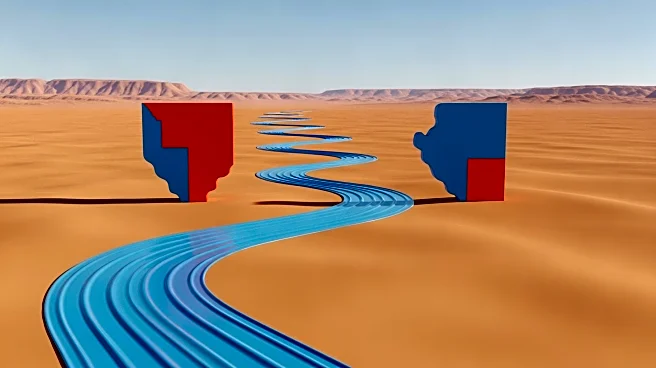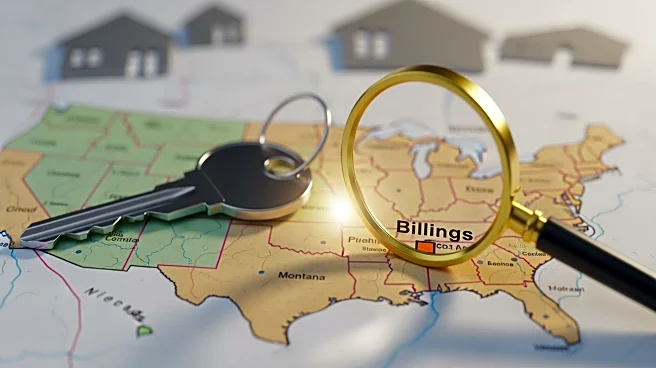What's Happening?
The Trump administration is pressuring seven Western states to reach an agreement on sharing the dwindling water resources of the Colorado River. The administration has set a deadline for the states to agree on initial
terms to reduce water usage and prevent the river's reservoirs from reaching critically low levels. California, which uses the most water from the river, is expected to play a significant role in the negotiations. Persistent disagreements have arisen between the lower basin states—California, Arizona, and Nevada—and the upper basin states—Colorado, Utah, Wyoming, and New Mexico—over water cuts and reservoir management. The states have been meeting regularly to address water shortages expected after 2026, when current rules expire.
Why It's Important?
The Colorado River is a crucial water source for 40 million people, including cities, Native tribes, and agricultural communities across the Western U.S. and Mexico. The river has been overused for decades, and its reservoirs have significantly declined due to prolonged dry conditions exacerbated by climate change. The outcome of these negotiations will impact water availability and management strategies in the region. Failure to reach a consensus could lead to legal battles, which may result in less favorable outcomes for the states involved. The situation underscores the urgent need for sustainable water management practices in the face of climate change and growing demand.
What's Next?
The states are scheduled to continue negotiations, with federal officials emphasizing the importance of reaching a collaborative agreement. If the states fail to meet the deadline, the federal government may have to impose measures, though it prefers a consensus-driven approach. The potential for legal disputes looms if an agreement is not reached, which could complicate water management efforts further. Stakeholders are hopeful that continued collaboration will lead to a viable solution that balances the needs of all parties involved.














